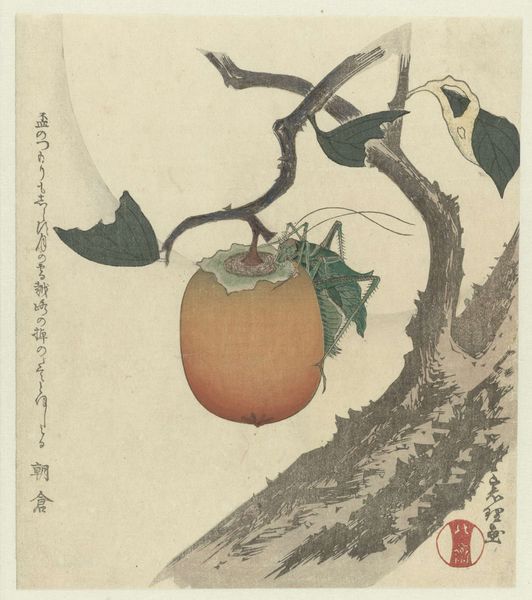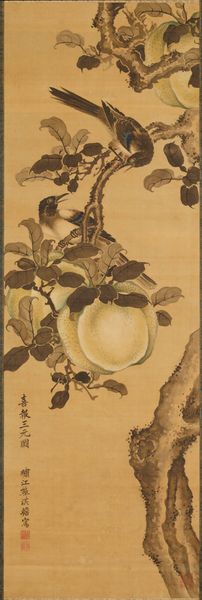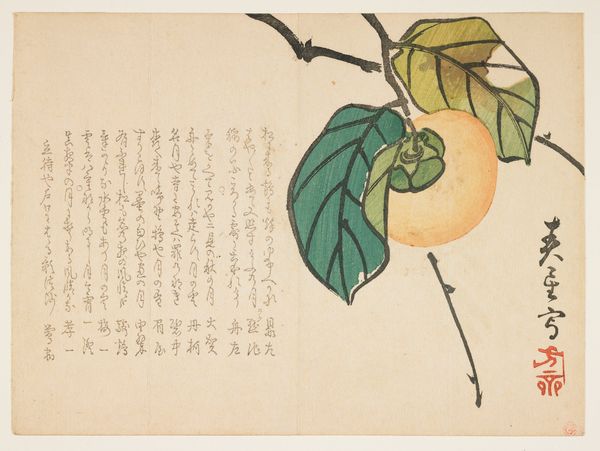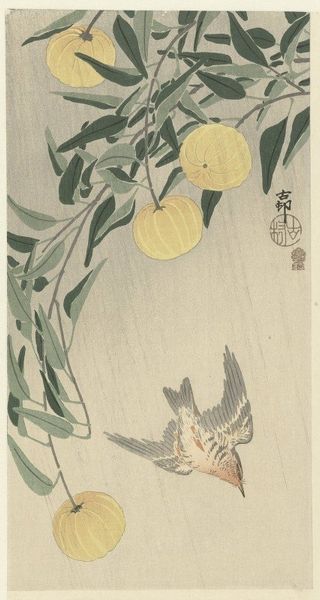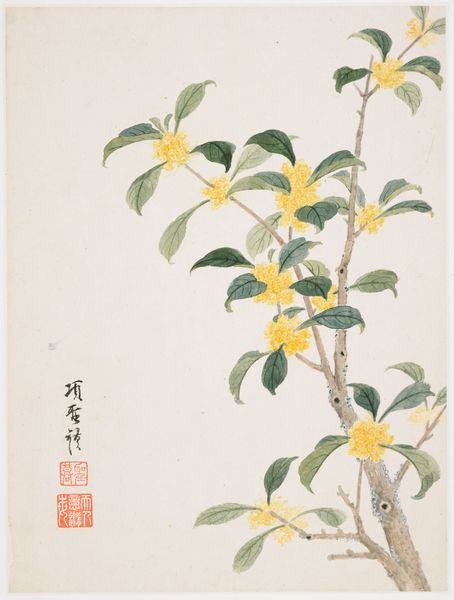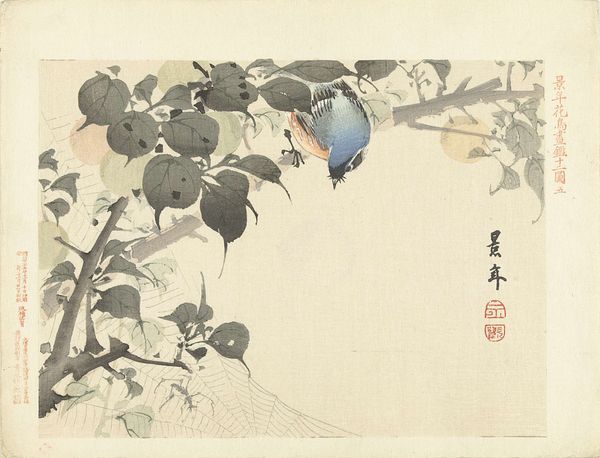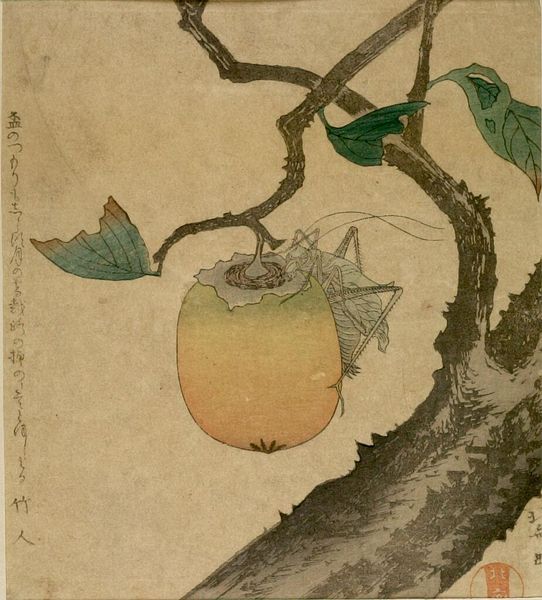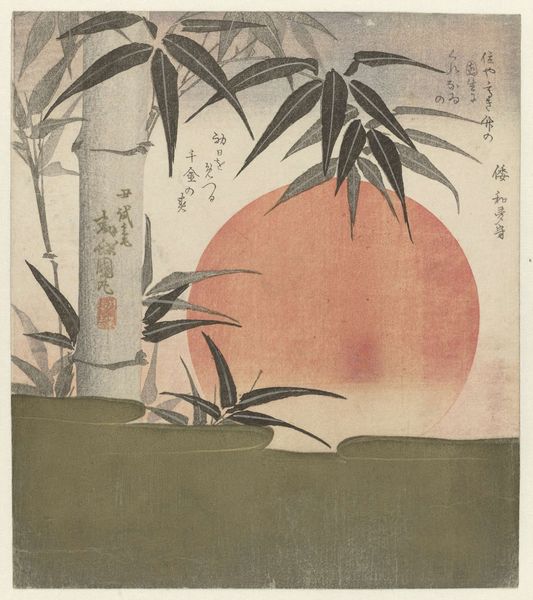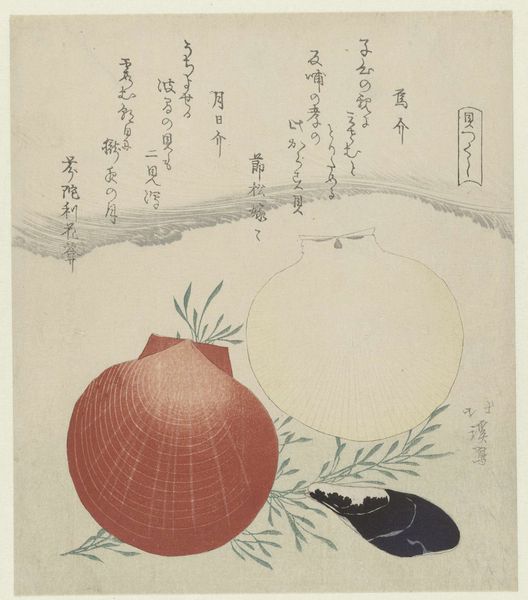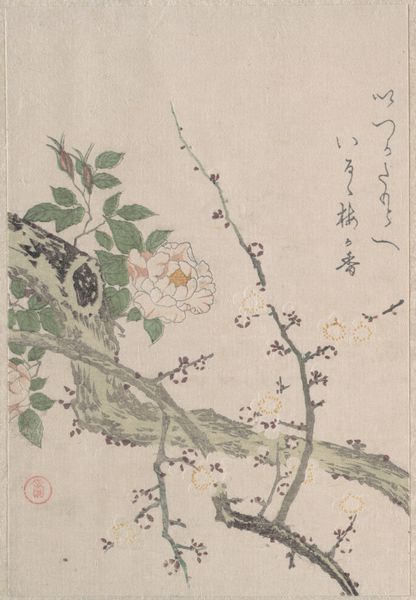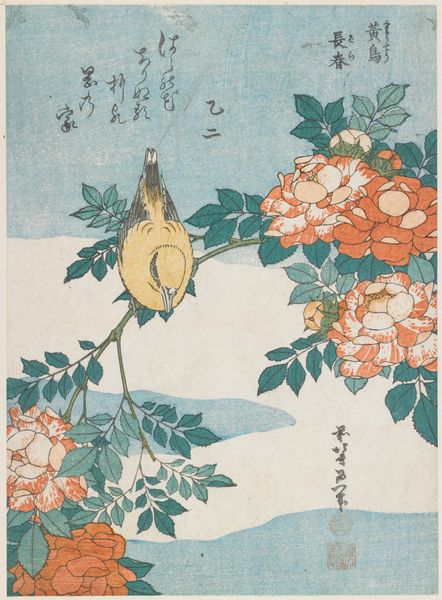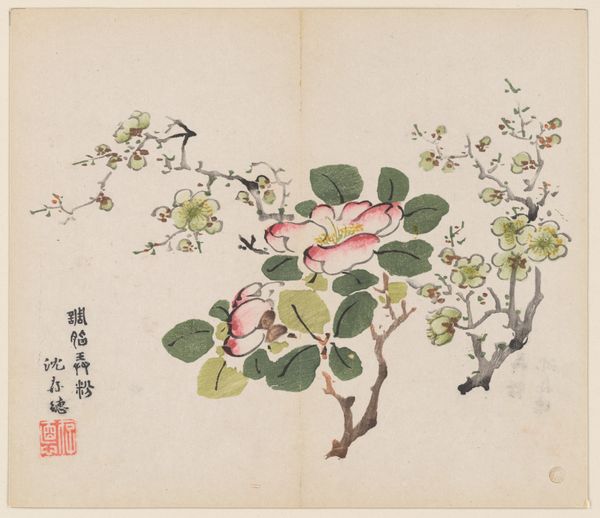
Dimensions: height 208 mm, width 184 mm
Copyright: Rijks Museum: Open Domain
Editor: This is "Kakivrucht met sprinkhaan," a woodblock print by Katsushika Hokusai, likely created between 1890 and 1900. It's a striking image, especially the contrast between the vibrant orange of the fruit and the delicate lines of the grasshopper. What draws your attention when you look at this work? Curator: The labor involved in producing a print like this fascinates me. Consider the physical process: carving the woodblocks, mixing the inks, carefully layering the colors to achieve the nuances in the fruit and the insect’s form. These are very accessible, and raise the question if high and low art even need be discussed as seperate at all. What relationship between the tree branch and the persimmon has taken hold here through production? Editor: It's interesting to think about the process of production, particularly how each element demanded a unique technical mastery and expertise of specialized craftsmanship. What about the artistic process as well? Curator: We see how natural materials and labour form a material continuum in the production of ukiyo-e. What happens to the natural cycles from decay when they are permanently rendered and reproducible, commodified as part of Japanese consumer culture. Do we change our awareness with an always-ripe persimmon that can exist permanently? It really has made me think more critically about materiality here, what about you? Editor: Definitely. I hadn’t thought about the tension between the ephemeral nature of the scene and the permanent nature of the print, or that mass reproducibility changes our awareness and perception! Thanks for the insights.
Comments
No comments
Be the first to comment and join the conversation on the ultimate creative platform.
